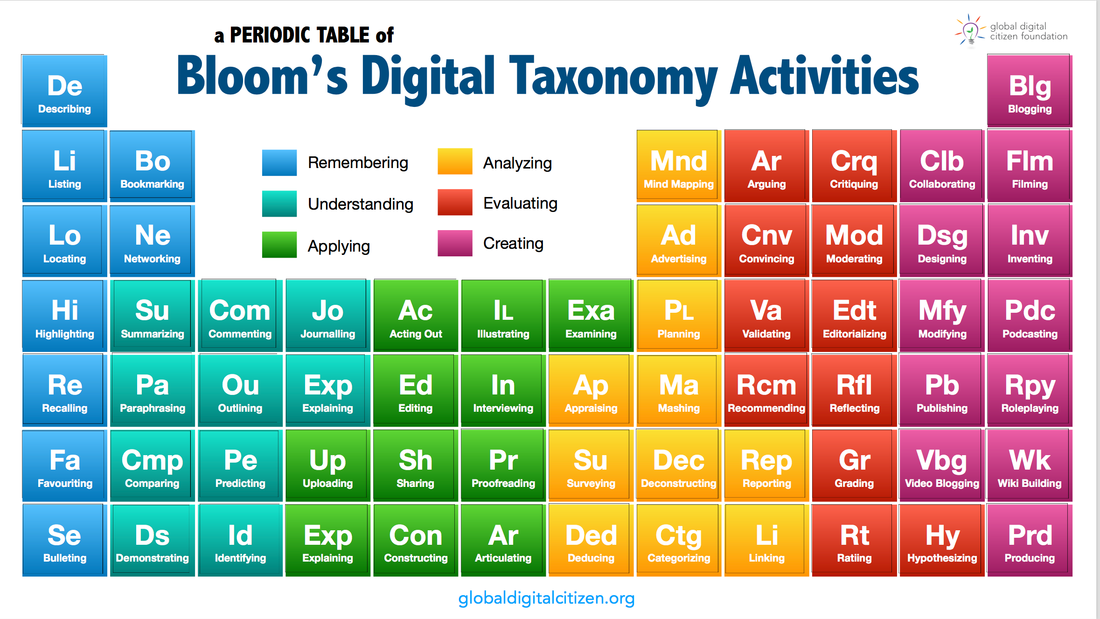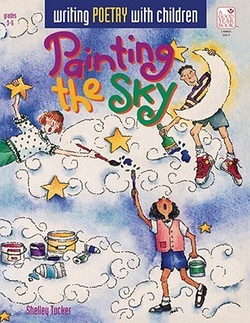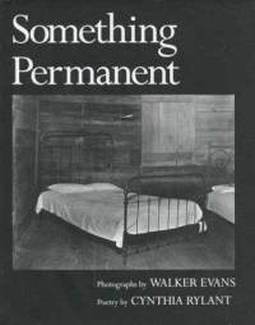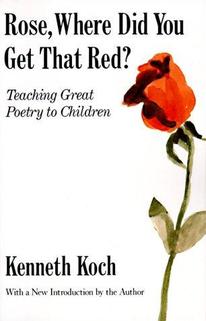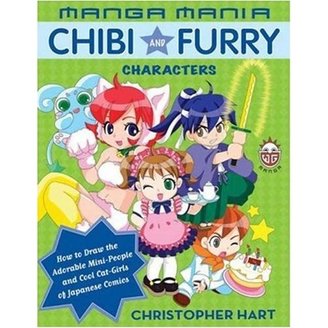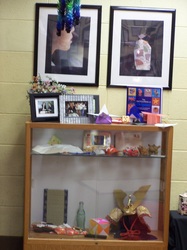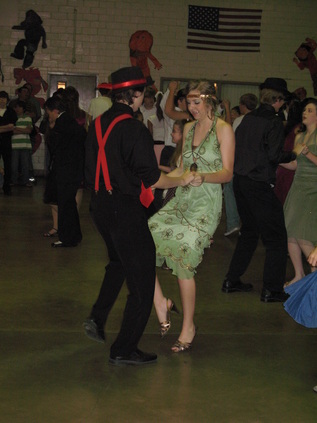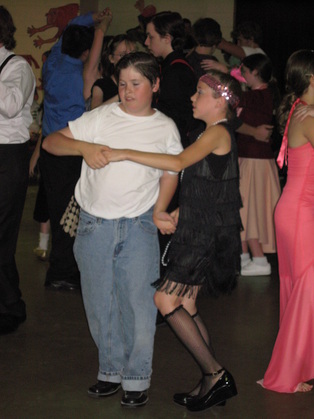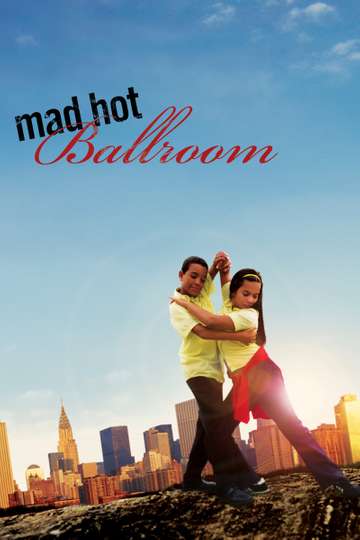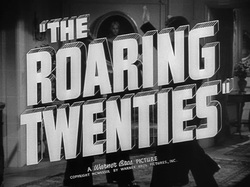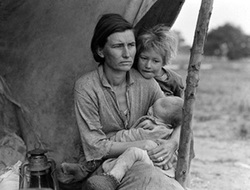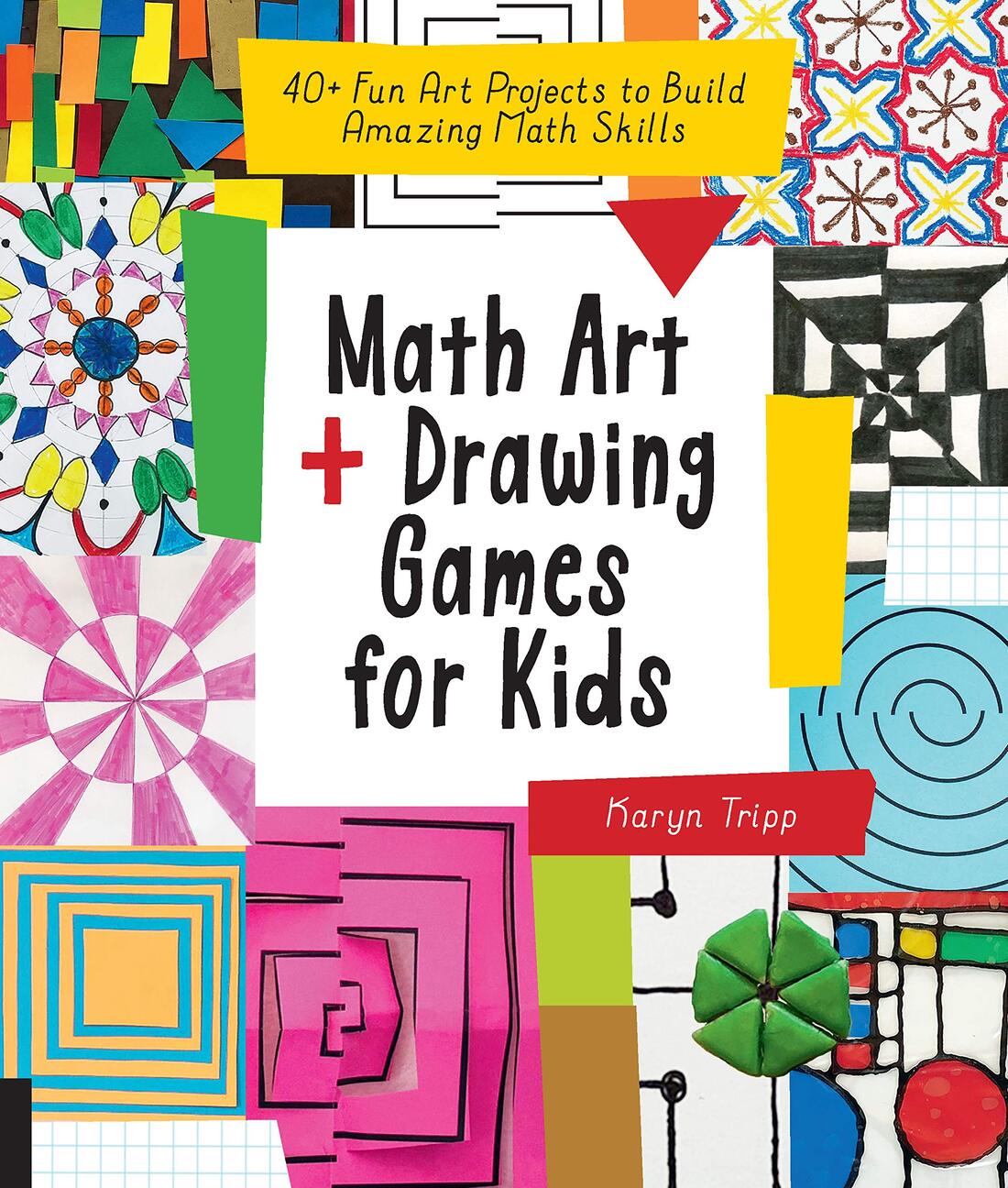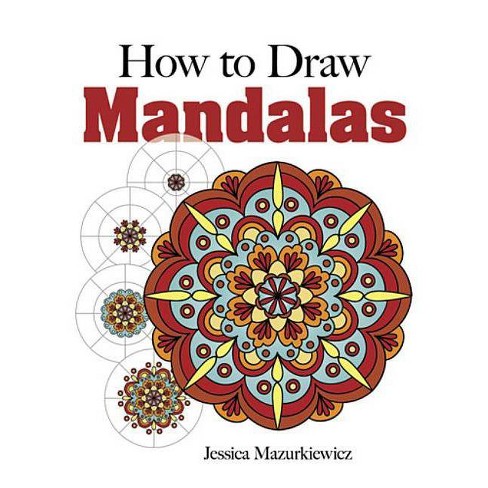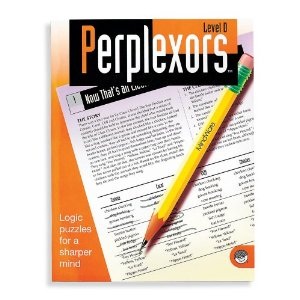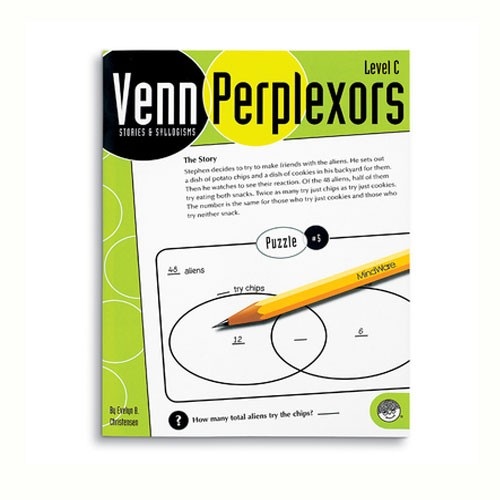Project Zero Thinking Tools
too much here to describe!
PARENT INVOLVEMENT THAT PARENTS LIKE --Let them be a PART of what you do!
REALLY Involving parents in G.T. in a big way!!! Make them a part of the fun when possible and see support for your program grow! CLICK HERE & WATCH VIDEO!
GREAT RESOURCE!!!
|
A LESSON I CREATED -- HERE
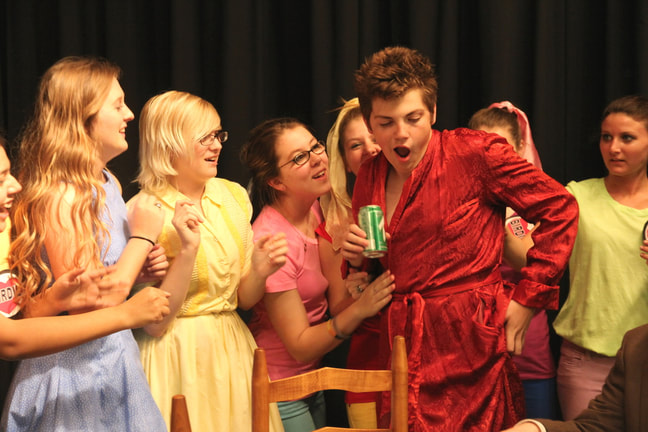
MY FAVORITE THING TO DO
WITH G.T. STUDENTS -
PUT ON A PLAY!
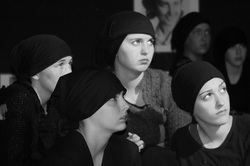
My strong feelings about involving G.T. students in plays began in April of 2010. I had been sitting on a Holocaust play I'd wanted to do for years about the experiences of Auschwitz survivor, Charlotte Delbo. I knew the intensity of that play required a special group of young women who could step outside their own lives and enter that dark place. I knew I had that group of girls. I enlisted the help of a friend I've known all my life who loved drama and had the time to help me work with these young women.
The personal transformation of each girl was incredible. They learned to put aside who they were and empathize with their character in a way that released them to show feelings few teenagers have ever considered or felt. What began with a strong sense of awkwardness and discomfort for each actor ended with real onstage tears and a genuine sense of all consuming agony. We worked extremely hard, even incorporating rhytmic choreography, settling for nothing less than perfection. The play was presented seven times, including presentations for other schools, the community, and at another location. After the first performance we were told that we needed to scatter boxes of Kleenex in the seats, which we did.There were seldom dry eyes in the audience; even many of the men shed tears This wonderful group of hardworking young women felt a burden to tell Delbo's story in a manner that both educated their audience and dared the audience to imagine --to see.
The personal growth I witnessed within this group of girls convinced me that our gifted students truly need experiences in drama within the G.T. setting. They need to develop the ability to speak confidently before a crowd, they need the opportunity to problem solve when it really matters, they need a chance to use creativity for a real purpose, they need to view criticism as a valuable tool, they need the personal satisfaction of giving of themselves to an audience, and they need the joy that comes from working, working, working to achieve something truly outstanding, something memorable,
To those who say, "What's high school drama for? Can't they achieve those outcomes there?" I would answer, "Do our gifted secondary students have the luxury of even taking those classes?" The requirements for graduation and the demands of AP coursework rob them of the time to experience drama and other classes that are not purely academic. After that play, one of the young women decided to apply for Governor's School with a concentration in Drama, submitting a video from the performance.
As a result of that April 2010 experience, I have since involved all my students in grades 2-12 in some type of theater-based project during the year. In my 24 years of working with G.T. students I have found absolutely nothing that begins to achieve for the gifted student what creating a theater presentation from beginning to end achieves --more importantly, it brings students, parents, the community, and the school together, creating a synergetic bond that makes us more than we were before.
The personal transformation of each girl was incredible. They learned to put aside who they were and empathize with their character in a way that released them to show feelings few teenagers have ever considered or felt. What began with a strong sense of awkwardness and discomfort for each actor ended with real onstage tears and a genuine sense of all consuming agony. We worked extremely hard, even incorporating rhytmic choreography, settling for nothing less than perfection. The play was presented seven times, including presentations for other schools, the community, and at another location. After the first performance we were told that we needed to scatter boxes of Kleenex in the seats, which we did.There were seldom dry eyes in the audience; even many of the men shed tears This wonderful group of hardworking young women felt a burden to tell Delbo's story in a manner that both educated their audience and dared the audience to imagine --to see.
The personal growth I witnessed within this group of girls convinced me that our gifted students truly need experiences in drama within the G.T. setting. They need to develop the ability to speak confidently before a crowd, they need the opportunity to problem solve when it really matters, they need a chance to use creativity for a real purpose, they need to view criticism as a valuable tool, they need the personal satisfaction of giving of themselves to an audience, and they need the joy that comes from working, working, working to achieve something truly outstanding, something memorable,
To those who say, "What's high school drama for? Can't they achieve those outcomes there?" I would answer, "Do our gifted secondary students have the luxury of even taking those classes?" The requirements for graduation and the demands of AP coursework rob them of the time to experience drama and other classes that are not purely academic. After that play, one of the young women decided to apply for Governor's School with a concentration in Drama, submitting a video from the performance.
As a result of that April 2010 experience, I have since involved all my students in grades 2-12 in some type of theater-based project during the year. In my 24 years of working with G.T. students I have found absolutely nothing that begins to achieve for the gifted student what creating a theater presentation from beginning to end achieves --more importantly, it brings students, parents, the community, and the school together, creating a synergetic bond that makes us more than we were before.
Program Visual Book
Shutterfly is a online company that allows you to utilize your own photographs in the production of a high quality hard cover book; text can be added, along with other graphics. For the past three years I have used Shutterfly to create a books showcasing special students projects. The books serve as a wonderful reminder of what we did and are proudly displayed in our G.T. classroom. Parents and students have their own copy of several of these books and LOVE them!
Shutterfly books in our room inclue: "Who Will Carry the Word?," The Harvest Celebration of 2009, "The Taming of the Shrew," "A Midsummer Night's Dream," and "It's a Wonderful Life."
There are several online companies you can use --but, I have had really good luck with Shutterfly. I wish I had a Shutterfly book for all the years I've been teaching!
************************************************************************
Shutterfly books in our room inclue: "Who Will Carry the Word?," The Harvest Celebration of 2009, "The Taming of the Shrew," "A Midsummer Night's Dream," and "It's a Wonderful Life."
There are several online companies you can use --but, I have had really good luck with Shutterfly. I wish I had a Shutterfly book for all the years I've been teaching!
************************************************************************
BOOKS THAT HAVE GREATLY INFLUENCED THE WAY I TEACH & HOW I RELATE TO PARENTS, STUDENTS, AND EVERYONE ELSE I KNOW...
************************************************************************
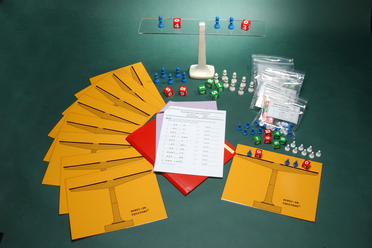
Hands on Equations
I have used this with elementary students at least five times over the years. It allows students to experience algebra BEFORE they decide it is hard or not cool.
Check it out under the elementary tab of our website. You can view students working!!!
************************************************************************
Shakespeare for Young People
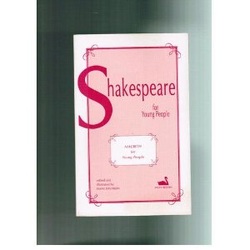
"Shakespeare for Young People" - Diane Davidson (also called Swan Books): I have used this series serveral times for Shakespeare units that culminate in the performance of a Shakespeare play. We have presented "Romeo and Juliet," "The Taming of the Shrew," "Macbeth," "Hamlet," and "A Midsummer Night's Dream."
The series uses Shakespeare's ACTUAL lanaguage, but has been shortened somewhat from the original plays. Typically a Swan play takes about an hour and a half to perform. The series is useful in simply having students read the plays --there are so countless uses.
The books are currently out of print, however they can be found at many used bookstore websites (even Amazon has them). The good news is that since they are out of print, you can copy scripts for your students.
************************************************************************
The series uses Shakespeare's ACTUAL lanaguage, but has been shortened somewhat from the original plays. Typically a Swan play takes about an hour and a half to perform. The series is useful in simply having students read the plays --there are so countless uses.
The books are currently out of print, however they can be found at many used bookstore websites (even Amazon has them). The good news is that since they are out of print, you can copy scripts for your students.
************************************************************************
Creative Thinking!!!
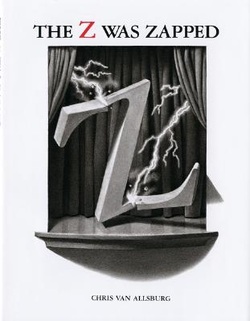
This project works with virtually any age. Even secondary students love the challenge and pride themselves on being even more creative than Christ Van Allsburg (notice the picture gallery to see some of their creations). I would NOT have each student complete their own book --it takes too long! Instead, I had them work in small groups as a team. They brainstormed ideas, selected those for inclusion, chose a group illustrator so the book would have unity; as the artist drew the images, the others worked to color, outline, and do any computer work necessary.
KEY: The "D" was defeating a dragon; the "E" was egged; the "F" had fleas; the "P" picked his nose (kids love bathroom humor!); the "T" threw a temper tantrum (triple letter!!!); and you are going to love this one --the "U" had ugly underwear!
************************************************************************
SET - http://www.setgame.com/set/index.html
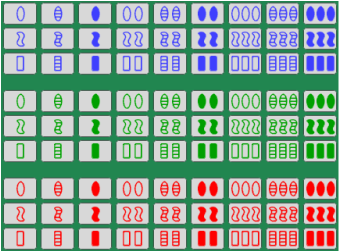
To create a SET, a player must locate three cards in which each of the four features is either all the same on each card or all different on each card,
when looked at individually. The four features are, symbol (oval, squiggle or diamond), color (red, purple or green), number (one, two or three) or shading (solid, striped or open). Age is no advantage in this fast paced game.
The website has other resources for using SET, including a daily online SET puzzle.
******************************************************************************
when looked at individually. The four features are, symbol (oval, squiggle or diamond), color (red, purple or green), number (one, two or three) or shading (solid, striped or open). Age is no advantage in this fast paced game.
The website has other resources for using SET, including a daily online SET puzzle.
******************************************************************************
COMPLETE SERIES HERE!
GREAT ACTIVITIES Bundle at Teachers Pay Teachers HERE
Libertys KIDS --Early History of our Country
Liberty's Kids PBS TV series from several years ago provides 7-12 year olds with a fresh and exciting experience of the extraordinary period of 1773 to 1789 in American history. TONS of worthwhile activities are on the site that complement the series, offering rich independent research ideas and more. You will LOVE IT!!!
************************************************************************
************************************************************************
POETRY UNIT (3 FAVORITE BOOKS) --CULMINATING WITH POETRY ANTHOLOGY TO SELL
***********************************************************************
MIYAZAKI & Studio Ghibli
|
KIDS WEB JAPAN --has it all!!!! Click on graphic
************************************************************************
I LIKE MAKING MY ROOM LOOK LIKE WHAT WE ARE STUDYING...
At the beginning of each school year the kids come in to see what the room will tell them --even my high school kids sneak over to see. Here are some photographs of the room when we did our focus on Japan.
************************************************************************
BALLROOM DANCING!!!
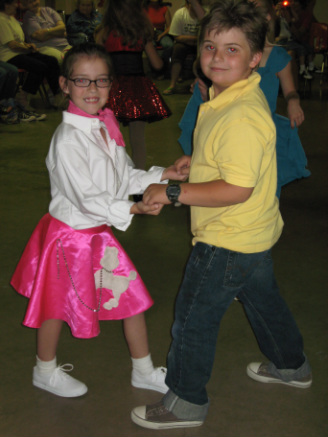
I learned right along with them! (It's amazing what you can find online --videos show how to do it all! I also found a community person who had taught ballroom dancing as a P.E. course at A.S. U.. She came and worked with the kids SEVERAL times --and me. We learned the Tango, Fox Trot, Swing, Waltz, Cha Cha, and the Merengue. We had a dance night (grades 2-12) where everyone dressed up in their favorite dress style clothes --everything from 50's clothes to suit and tie. Parents were invited and even were invited by their son/daughter to learn a few of the dances. Talk about a workout!!!
************************************************************************
SPEND THE NIGHT IN A HOOVERVILLE
************************************************************************
WATERSHIP DOWN & THE HOBBIT - REENACTMENTS!
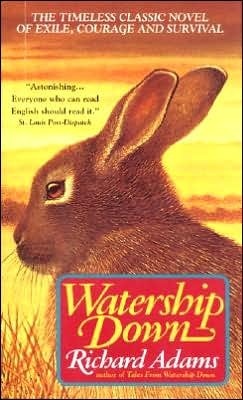
Although this book is not typically used in elementary school, gifted students soon get caught up in the story. I know...how can a story about rabbits be anything but cheesy. I assure you, this book is excellent and lends itself to a look at the characteristics of giftedness that enable a person --or a rabbit --to fulfill their potential.
We shifted through and discussed the book for months, doing mini-projects along the way to better student understanding of the book and to provide a break from reading well above grade level. This book is so good for affective development!
The culminating event was a recreation of the world of Watership Down where younger students were the rabbits (and dressed as such) and the older students designed the various sets and dressed as the other characters in the novel. "Rabbits" were divided into teams and set out on an adventure to find their own Watership Down warren. Adult chaperones were assigned to each group as students set out on a quest that took them all over town and to some pretty intense situations (just like in the novel). Older students had a blast brainstorming ways to bring the novel to life for the younger students and involve them in reliving the adventure.
The final destination was a night spent in a rabbit warren (in the basement of a church) where the walls and ceilings were covered in black plastic sheeting and grape vines were hanging everywhere. Rabbits crawled through up and down "tunnels" to enter the warren.
Task for the evening included: 1. Decipher the Message on the Notice Board, 2. Discover the Map, 3. Get Fiver and Pipkin across the Enborn, 4. Go with Strawberry to Cowslip's Warren - create a Laburnum, 5. Save Bigwig! 6. Board the Hrududu to Watership Down, 7. Prepare the Warren, 8. Silflay in the Meadow, 9. Feed Kehaar, 10. Rescue the Does at Nuthanger, 11. Free Blacklavar from Woundwort, 12. Discover the Boat to Freedom, 13. Shelter the evening in the shelter of Watership Down
We shifted through and discussed the book for months, doing mini-projects along the way to better student understanding of the book and to provide a break from reading well above grade level. This book is so good for affective development!
The culminating event was a recreation of the world of Watership Down where younger students were the rabbits (and dressed as such) and the older students designed the various sets and dressed as the other characters in the novel. "Rabbits" were divided into teams and set out on an adventure to find their own Watership Down warren. Adult chaperones were assigned to each group as students set out on a quest that took them all over town and to some pretty intense situations (just like in the novel). Older students had a blast brainstorming ways to bring the novel to life for the younger students and involve them in reliving the adventure.
The final destination was a night spent in a rabbit warren (in the basement of a church) where the walls and ceilings were covered in black plastic sheeting and grape vines were hanging everywhere. Rabbits crawled through up and down "tunnels" to enter the warren.
Task for the evening included: 1. Decipher the Message on the Notice Board, 2. Discover the Map, 3. Get Fiver and Pipkin across the Enborn, 4. Go with Strawberry to Cowslip's Warren - create a Laburnum, 5. Save Bigwig! 6. Board the Hrududu to Watership Down, 7. Prepare the Warren, 8. Silflay in the Meadow, 9. Feed Kehaar, 10. Rescue the Does at Nuthanger, 11. Free Blacklavar from Woundwort, 12. Discover the Boat to Freedom, 13. Shelter the evening in the shelter of Watership Down
The HOBBIT
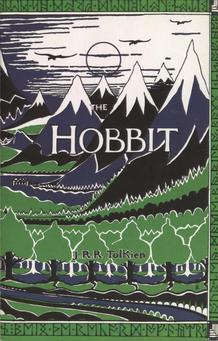
My 2nd through 8th graders read this, both at home and in the G.T. classroom. Surprisingly, I discovered that my girls had a harder time wading through the fantasy than the boys did --they loved it! We did a variety of activities AS we read to "make sure" everyone was actually reading and comprehending Tolkiens wonderful tale. The culminating activity found students divided into teams for an reenactment that enlisted the help of parents AND my high school gifted students. Each team had a Gandalf dressed leader (high school student). Activities included:
1. Teams were sorted, given their folder of tasks, and met in teams to determine how to proceed (each team had an adult chaperone)
2. The folders contained the following: a. Equal Use of Player Sheet (teams had to list the name of each person on a line and add tally marks each time that particular students was primarily responsible for the doing --this insured that everyone took part). b. Golum's Riddles in the Dark Answer Booklet (students actually went in a dark room where they were handed their riddles by Golum himself. They had to use a flashlight to read the riddles and work in the dark as a team.
c. Notebook of "Beorn's WORDS" - taken from each chapter where teams must determine a synonym for the words and points!
d. Secret coded message chart e. Hobbit Quiz Bowl Game (which they played with a very intimidating moderator f. a book of Power Questions (challenging questions for each chapter) e. tasks booklets (paralleling those in the chapters) INCLUDED: dishstacking, Bilbo ring find, eagle on the perch, scariest warg, honeybees, and others
The biggest adventure of all, was entering Smaug's lair --it was remarkable!
1. Teams were sorted, given their folder of tasks, and met in teams to determine how to proceed (each team had an adult chaperone)
2. The folders contained the following: a. Equal Use of Player Sheet (teams had to list the name of each person on a line and add tally marks each time that particular students was primarily responsible for the doing --this insured that everyone took part). b. Golum's Riddles in the Dark Answer Booklet (students actually went in a dark room where they were handed their riddles by Golum himself. They had to use a flashlight to read the riddles and work in the dark as a team.
c. Notebook of "Beorn's WORDS" - taken from each chapter where teams must determine a synonym for the words and points!
d. Secret coded message chart e. Hobbit Quiz Bowl Game (which they played with a very intimidating moderator f. a book of Power Questions (challenging questions for each chapter) e. tasks booklets (paralleling those in the chapters) INCLUDED: dishstacking, Bilbo ring find, eagle on the perch, scariest warg, honeybees, and others
The biggest adventure of all, was entering Smaug's lair --it was remarkable!
************************************************************************
MATHEMATIC ART SHOW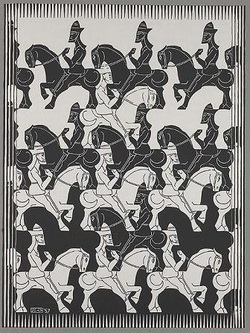
Mathematics is a discipline often overlooked for its creative possibilities. The art of M. C. Escher provides the perfect forum for combining mathematics and art. Escher's background and philosophy of life also provide students a positive role model who retained his individuality despite the temptation to conform.
Students created three mathematical art projects for display at the art show, including their BEST Escher print. |
MUST HAVE Escher RESOURCE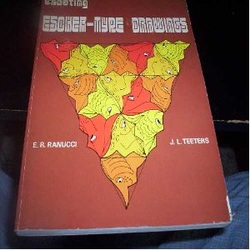
"Creating Escher-Type Drawings" by E.R. Ranucci served as the foundation for the unit. It is an absolute MUST have and provides background information as well. Students utilize both the left and right brain. The left is asked to alter geometric shapes in a prescribe manner resulting in a tessellating shape. The creative right brain then takes over and turns the shape intor a recognizable object. I introduced the study by showing students many of Escher's prints, having each student create a "title" for the print. After that students were given a list with all the titles Escher gave his art --they then tried to match them to the prints. ***Ultimate Challenge (toward the end) --I gave students altered, tessellating shapes and challenged them to determine the original shape and the procedure used to alter it. ESCHER BOOK CAN BE PURCHASED HERE: https://www.abebooks.com/book-search/title/creating-escher-type-drawings/ |
************************************************************************
"Our Place in Time" Oral History Project

Each student was assigned an area senior citizen --the list was composed of individuals recommended by a local historian for the richness of their experience; younger students chose an older family member to interview. Dr. Hansen, professor of folklore at Arkansas State University, served as a higher education Advisor for the project which was funded in part by a Arkansas Humanities Grant. Dr. Hanson met with students and explained the ethical responsibilities of interviewing others, as well as procedures for creating a professional product.
The project consisted of the following:
a. tradition bearer received letter explaining the project
b. telephone contact made by student with tradition bearer
c. student workshops on oral history procedures, relating to interviewees, use of equipment
d. telephone contact to set time and place for interview
e. Interview conducted using established questions (veterans, farmers also answer additional questions); old photographs scanned and catalogued
f. transcription process begins following format outlined by Dr. Hansen; photographs repaired
g. photos selected for "Our Place in Time" Banquet and Public Gallery
g. finished transcripts proofread, selected photographs printed for tradition bearer
h. Preparations for Banquet; publicity, invitations, table decorations, transcripts bound, CD's prepared; photographs placed in large envelops
i. Hallway photo exhibit and attached information sheets readied; individual student poetry projects completed
j. Banquet held to honor Tradition Bearers. Students met Tradition Bearers at the door and escorted their Tradition Bearer to the table. Each student sat with their Tradition Bearer and accompanied them to the "Our Place in Time" exhibit --(hallways were filled with: enlargements of selected photos showcasing the history of our town and its people; a wall honoring veterans interviewed; a hallway with photographs of eight small schools that served the area; a hallway with photographs of farming in its earliest stages here; an area with photographs of all the tradition bearers as children or teens; a poetry area that featured a photograph scanned during the project with an accompanied student authored free verse; objects that were loaned for the exhibit; and MUCH MORE! IT WAS WONDERFUL!!! The exhibit remained open to the public for two weeks and was featured in the Sunday full-page color section of the Jonesboro Sun. Many community members from here and away came to see the exhibit.
The project consisted of the following:
a. tradition bearer received letter explaining the project
b. telephone contact made by student with tradition bearer
c. student workshops on oral history procedures, relating to interviewees, use of equipment
d. telephone contact to set time and place for interview
e. Interview conducted using established questions (veterans, farmers also answer additional questions); old photographs scanned and catalogued
f. transcription process begins following format outlined by Dr. Hansen; photographs repaired
g. photos selected for "Our Place in Time" Banquet and Public Gallery
g. finished transcripts proofread, selected photographs printed for tradition bearer
h. Preparations for Banquet; publicity, invitations, table decorations, transcripts bound, CD's prepared; photographs placed in large envelops
i. Hallway photo exhibit and attached information sheets readied; individual student poetry projects completed
j. Banquet held to honor Tradition Bearers. Students met Tradition Bearers at the door and escorted their Tradition Bearer to the table. Each student sat with their Tradition Bearer and accompanied them to the "Our Place in Time" exhibit --(hallways were filled with: enlargements of selected photos showcasing the history of our town and its people; a wall honoring veterans interviewed; a hallway with photographs of eight small schools that served the area; a hallway with photographs of farming in its earliest stages here; an area with photographs of all the tradition bearers as children or teens; a poetry area that featured a photograph scanned during the project with an accompanied student authored free verse; objects that were loaned for the exhibit; and MUCH MORE! IT WAS WONDERFUL!!! The exhibit remained open to the public for two weeks and was featured in the Sunday full-page color section of the Jonesboro Sun. Many community members from here and away came to see the exhibit.
************************************************************************
EVER BEFORE OUR EYES!!!
What message do you want your students to think of each time they are in your room and take with them when they leave? If you could embed a truth in the hearts and minds of your students, what would it be? PUT IT ON YOUR WALLS! REFER TO IT OFTEN! Here are some of the messages I have put ever before their eyes:
"THIS, TOO, SHALL PASS." --reminds students that bad times will not last forever even though it may feel like it (gives us courage and keeps us hopeful); it also tells students to expect that good times are to be relished and should not be expected to be a day in-day out reality (keeps us humble).
"I WILL HONOR MY UNDESERVED ABILITY BY ALWAYS DOING MY BEST" (read about this one at my blog under "Undeserved Ability" ...2-2-2012 entry)
"WILL MY CHOICE PASS THE NEWSPAPER TEST?" The book, "How Good People Make Tough Choices" suggests that anytime a decision or action is about to be made, an individual should give that choice or action the "newspaper test" FIRST. This is how it works: Imagine that what you are about to do, or the decision you are about to make, is going to be the headline in tomorrow's newspaper. Would you be proud or ashamed?
"IT DOESN'T MATTER WHAT WE EXPECT OUT OF LIFE --WHAT MATTERS IS WHAT LIFE EXPECTS FROM US." (Viktor Frankl) The worn out complaint, "It isn't fair," becomes an excuse to give up, have a pity party, or become angry; these negative attitudes zap potential. Frankl, a Holocaust survivor, found inner strength when he looked on his difficulties as a challenge; this attitude is what separates those who succeed from those you do not. Stuff happens --so what now? The answer to that reveals character or a lack thereof...
"THERE IS NO SHALLOW END IN THIS ROOM --EITHER SINK OR SWIM!" --Harsh? Maybe. However, slackers have no place in our programs. That doesn't mean that each student should do everything perfectly. It does mean nothing but optimum effort will work here.
"YOUR INTELLIGENCE IS MALLEABLE" --Use it or lose it. Some of our gifted kids think that since "I am so smart," I can float along. Kids need to recognize their obligation to grow their intellect; they also need to recognize their power to stagnate their intellect. (partners with the honoring undeserved ability quote)
"EVERYTHING WE DO IN HERE HAS A PURPOSE!" --This has nothing to do with the G.T. standards we all have or some posted objective. Kids (even big kids) need to know why what they are doing is important ...how it will benefit them. For instance, involvement in the plays we do help them learn to take risks that make them feel uncomfortable, learn to see criticism as positive, and enable them to speak confidently before others. The question is, "What is THEIR purpose?"
"NO EMOTIONAL VAMPIRES ALLOWED" --I even have this posted on an image of a vampire. Kids need to recognize when they are speaking or reacting in a manner that SUCKS the joy from the room and the potential from their own being and that of others. They need to recognize when they are being negative. For some kids this behavior is so ingrained, they can't see it in themselves. Negative statement? Point to the vampire.
"THIS, TOO, SHALL PASS." --reminds students that bad times will not last forever even though it may feel like it (gives us courage and keeps us hopeful); it also tells students to expect that good times are to be relished and should not be expected to be a day in-day out reality (keeps us humble).
"I WILL HONOR MY UNDESERVED ABILITY BY ALWAYS DOING MY BEST" (read about this one at my blog under "Undeserved Ability" ...2-2-2012 entry)
"WILL MY CHOICE PASS THE NEWSPAPER TEST?" The book, "How Good People Make Tough Choices" suggests that anytime a decision or action is about to be made, an individual should give that choice or action the "newspaper test" FIRST. This is how it works: Imagine that what you are about to do, or the decision you are about to make, is going to be the headline in tomorrow's newspaper. Would you be proud or ashamed?
"IT DOESN'T MATTER WHAT WE EXPECT OUT OF LIFE --WHAT MATTERS IS WHAT LIFE EXPECTS FROM US." (Viktor Frankl) The worn out complaint, "It isn't fair," becomes an excuse to give up, have a pity party, or become angry; these negative attitudes zap potential. Frankl, a Holocaust survivor, found inner strength when he looked on his difficulties as a challenge; this attitude is what separates those who succeed from those you do not. Stuff happens --so what now? The answer to that reveals character or a lack thereof...
"THERE IS NO SHALLOW END IN THIS ROOM --EITHER SINK OR SWIM!" --Harsh? Maybe. However, slackers have no place in our programs. That doesn't mean that each student should do everything perfectly. It does mean nothing but optimum effort will work here.
"YOUR INTELLIGENCE IS MALLEABLE" --Use it or lose it. Some of our gifted kids think that since "I am so smart," I can float along. Kids need to recognize their obligation to grow their intellect; they also need to recognize their power to stagnate their intellect. (partners with the honoring undeserved ability quote)
"EVERYTHING WE DO IN HERE HAS A PURPOSE!" --This has nothing to do with the G.T. standards we all have or some posted objective. Kids (even big kids) need to know why what they are doing is important ...how it will benefit them. For instance, involvement in the plays we do help them learn to take risks that make them feel uncomfortable, learn to see criticism as positive, and enable them to speak confidently before others. The question is, "What is THEIR purpose?"
"NO EMOTIONAL VAMPIRES ALLOWED" --I even have this posted on an image of a vampire. Kids need to recognize when they are speaking or reacting in a manner that SUCKS the joy from the room and the potential from their own being and that of others. They need to recognize when they are being negative. For some kids this behavior is so ingrained, they can't see it in themselves. Negative statement? Point to the vampire.
************************************************************************
ANDY GOLDSWORTHY PROJECTS http://www.ucblueash.edu/artcomm/web/w2005_2006/maria_Goldsworthy/TEST/index.html
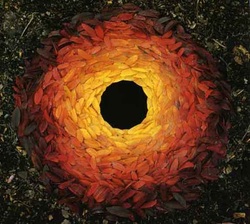
Andy Goldsworthy is an environmentalist, a sculptor, and artist from Great Britain. He creates site specific sculptor and land art situated in natural and urban settings. The materials used in Andy Goldsworthy's art often include brightly-coloured flowers, icicles, leaves, mud, pinecones, snow, stone, twigs, and thorns. Photography plays a crucial role in his art due to its often ephemeral and transient state. According to Goldsworthy, "Each work grows, stays, decays – integral parts of a cycle which the photograph shows at its heights, marking the moment when the work is most alive"
We utilized the book, "Andy Goldsworthy - Collaboration with Nature" as a resource. The focus was on appreciating things that DO NOT LAST, including TIMES, PE0PLE, and other things in life that are --like his work --ephemeral and transient. Today's students have little opportunity to enjoy the specialness of forested areas (or as we say in Arkansas --woods). The culminating project involved students working in pairs to create their own Goldsworthy-type projects. They had to use what they found. Parents served as chaperones --each partner group had an adult. The role of the adults was strictly for safety and not for offering guidance or ideas. The projects were photographed and displayed in the hallways of the school along with images of Goldsworthy's works and his biography.
We utilized the book, "Andy Goldsworthy - Collaboration with Nature" as a resource. The focus was on appreciating things that DO NOT LAST, including TIMES, PE0PLE, and other things in life that are --like his work --ephemeral and transient. Today's students have little opportunity to enjoy the specialness of forested areas (or as we say in Arkansas --woods). The culminating project involved students working in pairs to create their own Goldsworthy-type projects. They had to use what they found. Parents served as chaperones --each partner group had an adult. The role of the adults was strictly for safety and not for offering guidance or ideas. The projects were photographed and displayed in the hallways of the school along with images of Goldsworthy's works and his biography.
IDEAS: HERE
AND HERE
************************************************************************
YEAR LONG SYLLABUS... WHAT I "WISH" I DID EVERY SUMMER --some summers I do and some I don't, however working on a syllabus for an entire year is GREAT for thinking ahead; it provides a map of destinations and saves time during the school year. ***I seldom do all the things in the syllabus... it becomes more of a pick and choose. This is due do to scheduling and unforeseen time required for projects.
************************************************************************
-------------------------------------------------------------------------------------------------------------------------
Kohlberg's Levels of Moral Development (for middle school through high school)
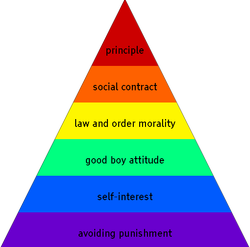
I DON'T REALLY KNOW WHY, BUT KIDS ARE FASCINATED WITH THIS!!! I'VE USED IT OVER AND OVER AND DESPITE THE GROUP, THEY ARE MESMERIZED...
INFORMATION ABOUT THE LEVELS LINK
...about Kohlberg
1. The theory has never be disproved --it can be seen in all cultures and all socio-economic levels
2. Each person's moral reasoning develops THROUGH the stages. Stages are never skipped, but progress on level at a time.
3. Some people go faster and farther through the stages; some stay in the lower levels all their lives
4. Movement through the levels in a gradual process --there are no sudden leaps
5. Given the right opportunity, one can understand and function at a moral level immediately above their typical level of functioning
6. Moral development is always progressive --regression does not typically occur; however, substance abuse is the exception to this rule.
7. A person can be in transition between stages, functioning at both levels
8. when one is "in stage," at least 50% of his responses are at that stage with some higher and some lower
Kohlberg's MORAL DILEMMAS to use for discussion LINK
GREAT LINK FOR MORAL DILEMMAS AND PHILOSOPHY FOR KIDS
ANOTHER GOOD PHILOSOPHY LINK THAT INTRODUCES A "PHILOSOPHER OF THE WEEK" AND LESSON PLANS ABOUT THAT PHILOSOPHER!
WRITING PROMPT FOR STUDENTS: "At what level of Kohlberg do you MOST see yourself functioning? What is it about your decision processes that keeps you from functioning predominately in the next higher level?"
THE FOLLOWING VIDEO WAS MADE BY A STUDENT (not one of mine) AND BEAUTIFULLY EXPLAINS KOHLBERG WHILE PROVIDING INSPIRATION FOR SIMILAR PROJECTS --
INFORMATION ABOUT THE LEVELS LINK
...about Kohlberg
1. The theory has never be disproved --it can be seen in all cultures and all socio-economic levels
2. Each person's moral reasoning develops THROUGH the stages. Stages are never skipped, but progress on level at a time.
3. Some people go faster and farther through the stages; some stay in the lower levels all their lives
4. Movement through the levels in a gradual process --there are no sudden leaps
5. Given the right opportunity, one can understand and function at a moral level immediately above their typical level of functioning
6. Moral development is always progressive --regression does not typically occur; however, substance abuse is the exception to this rule.
7. A person can be in transition between stages, functioning at both levels
8. when one is "in stage," at least 50% of his responses are at that stage with some higher and some lower
Kohlberg's MORAL DILEMMAS to use for discussion LINK
GREAT LINK FOR MORAL DILEMMAS AND PHILOSOPHY FOR KIDS
ANOTHER GOOD PHILOSOPHY LINK THAT INTRODUCES A "PHILOSOPHER OF THE WEEK" AND LESSON PLANS ABOUT THAT PHILOSOPHER!
WRITING PROMPT FOR STUDENTS: "At what level of Kohlberg do you MOST see yourself functioning? What is it about your decision processes that keeps you from functioning predominately in the next higher level?"
THE FOLLOWING VIDEO WAS MADE BY A STUDENT (not one of mine) AND BEAUTIFULLY EXPLAINS KOHLBERG WHILE PROVIDING INSPIRATION FOR SIMILAR PROJECTS --
L O G I C - Some kids love it! Some kids tolerate it... However, with a "CLUE NIGHT" awaiting those who complete the course, everyone's attitude becomes more determined! My THREE favorite logic resources are:
|
This is a alternate format to the usual GRID logic you typically see. I like it because it lends itself to transfer to real world problem solving.
|
All I can say about these is, "They are hard!" My brain simply doesn't grasp these, making me struggle. I did get much better at them, but initially the kids were helping me.
|
This is hands-on logic which helps reluctant logic solvers get more onboard. They are challenging and make time fly!
|
CLUE NIGHT: Students definitely need work on "questioning techniques" which will be crucial in the Clue Game and enable students to think about what they need to know and the best way to discover that information. This helpful Questioning LINK can serve as a starting point with students.
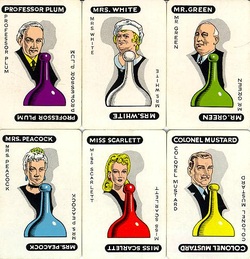
Students came dressed as detectives - trenchcoat, hat, etc.. They were divided up into teams and assigned an adult driver, who was their chauffeur and did not help them in the game. Parents were dressed as the suspects and located into different homes and buildings around our town --they were doing what was in keeping with their character. For instance, Mrs. White was cooking. Each suspect had a murder weapon clearly visible somewhere on their person --Mrs. White had a rope around her neck. Students were told they looks could be deceiving. They had a map of the general location of the game (I discovered that map skills were LACKING!) and directed the chaffeur. They were allowed to ask three "yes" and/or "no" questions of each suspect. Students had to determine the murderer, weapon, motive, and location of the crime. They also were not allowed to ask multiple questions within one question.
There was a time when all groups had to report back to the starting location. Teams arriving prior to that time had the time of their arrival recorded by the judge. Teams wrote down their conclusions on a sheet of paper and sealed it in an envelop. The envelops were opened to determine the winner. In the even that two teams had the SAME correct solutions, the team arriviing first was declared the winner. If a team arrived last, but before the time period was up, and had all the correct answers --while earlier arriving teams had incorrect answers, the team with the correct answers won. The winning team were given glasses with attached noses and moustache disguises, had their photograph taken and posted in the hallway. The parent suspects and all helping returned to the meeting place for refreshments with the detectives.
There was a time when all groups had to report back to the starting location. Teams arriving prior to that time had the time of their arrival recorded by the judge. Teams wrote down their conclusions on a sheet of paper and sealed it in an envelop. The envelops were opened to determine the winner. In the even that two teams had the SAME correct solutions, the team arriviing first was declared the winner. If a team arrived last, but before the time period was up, and had all the correct answers --while earlier arriving teams had incorrect answers, the team with the correct answers won. The winning team were given glasses with attached noses and moustache disguises, had their photograph taken and posted in the hallway. The parent suspects and all helping returned to the meeting place for refreshments with the detectives.
HAPPINESS --
Is the misery of one worth the happiness of many?
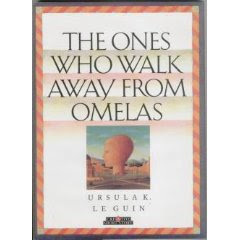
I have used this story many times with secondary students. It is easily read in a class period and lends itself to much discussion. AFTER reading consider:
1. Are we meant to admire the ones who walk away?
2. Is the misery of one worth the happiness of many?
3. In what way do we share the dilemma of the people of Omelas in our current economic and political world?
4. In what ways, if any, does the atomic bombing of Nagasaki and Hiroshima parallel this story?
1. Are we meant to admire the ones who walk away?
2. Is the misery of one worth the happiness of many?
3. In what way do we share the dilemma of the people of Omelas in our current economic and political world?
4. In what ways, if any, does the atomic bombing of Nagasaki and Hiroshima parallel this story?
Two Looks at "Happiness" - Two Fables by Leo Tolstoy: "The King and the Shirt" & "Two Brothers)
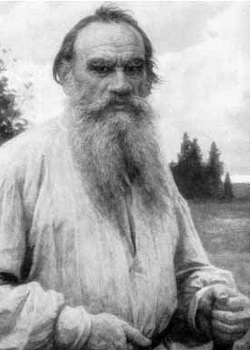
The King and the Shirt
1. Is the happy man content because he wants so little or because he has so little? Defend.
2. Why does it turn out that the happy man has no shirt?
3. According to the story, must one be poor in order to be happy? Explain.
The Two Brothers
1. Are we supposed to think that one brother made a better choice than the other? Explain.
2. Why is each brother satisfied with his own life?
1. Is the happy man content because he wants so little or because he has so little? Defend.
2. Why does it turn out that the happy man has no shirt?
3. According to the story, must one be poor in order to be happy? Explain.
The Two Brothers
1. Are we supposed to think that one brother made a better choice than the other? Explain.
2. Why is each brother satisfied with his own life?

